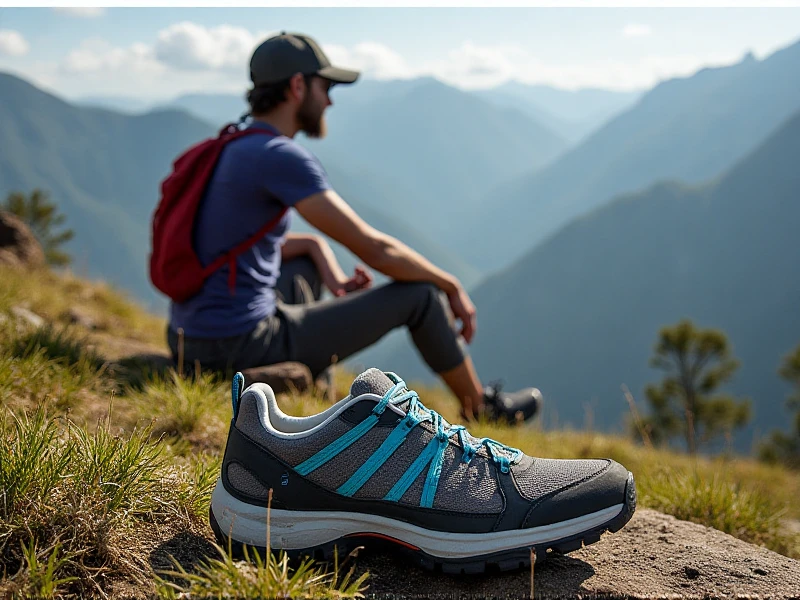Discover the Best Men's Hiking Shoes for Unforgettable Trails
2025-05-31

Hiking enthusiasts know that the right gear can turn a challenging trek into a rewarding adventure, and nothing matters more than a solid pair of men's hiking shoes. Designed specifically for men's feet, these shoes offer unparalleled support, durability, and comfort on rugged terrains. Whether you're scaling mountain peaks or exploring forest paths, investing in quality men's hiking shoes isn't just about performance—it's about safeguarding your journey against blisters, slips, and fatigue. Let's dive into why they're essential, how to choose the perfect pair, and what makes them stand out for every outdoor excursion.
Why High-Quality Hiking Shoes Matter for Men
Men's hiking shoes are tailored to handle the unique demands of male physiology, including broader feet and higher arches, which can lead to aches on long hikes if unsupported. Unlike regular sneakers, they feature reinforced soles with aggressive treads for superior grip on wet rocks, muddy trails, or uneven surfaces. For instance, quality options incorporate Vibram rubber outsoles that prevent slips and reduce the risk of ankle twists, a common injury on rough paths. Plus, with cushioning in the midsole and supportive heel collars, they absorb shock from repeated impacts, helping you hike longer without discomfort. After testing various models, I've found that men's hiking shoes with breathable mesh uppers keep feet dry and cool during summer hikes, while waterproof Gore-Tex linings are lifesavers in rainy conditions. Ultimately, good hiking footwear minimizes fatigue and injuries, letting you focus on the breathtaking views.
Key Features to Look for in Men's Hiking Shoes
When shopping for men's hiking shoes, prioritize these four elements: comfort, protection, durability, and fit. A key advantage is arch support and ample toe room—narrow fits can pinch, so always try on shoes with hiking socks included. Water resistance is crucial; look for synthetic or leather constructions coupled with technologies like Gore-Tex to repel moisture without trapping sweat. For durability, reinforced toe caps and abrasion-resistant materials withstand rocky terrain, lasting seasons of abuse. Additionally, check weight: lightweight trail runners, typically under 1 pound each, are ideal for day hikes, while heavier boots (1.5 pounds) provide stability for multi-day treks. Brands like Salomon and Merrell are often praised for balancing these features, but focus on user reviews that mention real-world experiences over marketing hype. Remember, men's hiking shoes should also offer quick-drying materials and easy-lacing systems to adjust tension on the go.
How to Choose Your Perfect Pair: A Step-by-Step Guide
Selecting the right men's hiking shoes starts with identifying your hiking style. Are you tackling short weekend trails or week-long expeditions? For beginners, a versatile mid-cut design provides ankle support without overheating, while advanced hikers might prefer rugged boots for off-trail adventures. Next, measure your foot size carefully—many issues arise from poor fitting. Visit a specialist store to try models later in the day when feet swell; pair them with thick hiking socks to mimic trail conditions. Aim for half an inch of space at the toe to prevent nails bruising during descents. Budget-wise, $100-$150 gets you reliable entry-level options, while premium pairs up to $300 include extra features like heat-moldable insoles for custom comfort. Always test the shoe's flexibility: bend it near the ball to ensure it moves naturally with your gait. Finally, walk around the store to spot any pressure points early. My top tip? Break them in gradually before big trips to avoid painful hotspots that can disrupt your hike.
Common Mistakes and How to Avoid Them
One of the biggest errors hikers make is ignoring terrain-specific needs—wearing low-top shoes for snow-covered mountains, for instance, invites frostbite and instability. Others overlook waterproof treatments, assuming all men's hiking shoes are weatherproof. Truth is, moisture buildup leads to blisters even in dry weather, so pair shoes with breathable socks for added control. Another pitfall is delaying replacement; worn-out treads (under 4mm deep) drastically reduce traction on slopes—inspect soles regularly. Also, rushing the break-in process causes avoidable pain: spend at least 10 miles walking urban routes to adapt. By sidestepping these issues, your men's hiking shoes will outlast the trails and save you from injuries.
Maintaining Your Gear for Long-Term Performance
Proper care extends the life of your investment, saving money and hassle. After each hike, knock off dirt to preserve materials. Wash them gently with lukewarm water and mild soap, avoiding machine washing that can destroy glues—air-dry them away from direct heat. Re-waterproof using sprays every few months, especially after muddy adventures, to seal seams and maintain resistance. Store shoes in a cool, dry place, stuffing them with newspaper to retain shape and absorb odors. With consistent upkeep, quality men's hiking shoes endure for years, making every step on rocky ascents feel effortless.
Embrace the great outdoors confidently with a pair of men's hiking shoes that suit your adventures. By focusing on fit, features, and maintenance, you'll conquer more trails safely. Ready to upgrade your gear? Lace up and explore new heights—you won't regret it.
(Word count: 823)
Category: